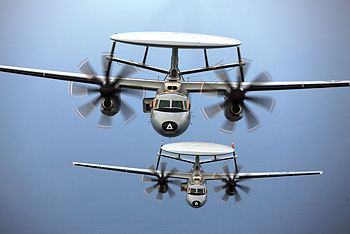INDIAN ARMED FORCES CHIEFS ON
OUR RELENTLESS AND FOCUSED PUBLISHING EFFORTS

SP Guide Publications puts forth a well compiled articulation of issues, pursuits and accomplishments of the Indian Army, over the years

I am confident that SP Guide Publications would continue to inform, inspire and influence.

My compliments to SP Guide Publications for informative and credible reportage on contemporary aerospace issues over the past six decades.
Technology
Need for a Reliable & Seamless ISR

India is planning to acquire medium-range maritime reconnaissance aircraft for which DRDO is developing the sensors and communications
Timely and accurate intelligence is an important ingredient of any successful operations. This is much more applicable in the maritime environment where the naval units are dispersed over vast stretches of the sea and the littoral environment. Add to the conventional naval operations, the environment of sea piracy, terrorism and search and rescue, and the requirement of reliable and seamless intelligence, surveillance and reconnaissance (ISR) goes up many more notches.
Fixed Wing Platforms
Technological developments in airborne radars in the late fifties led to the introduction of airborne early warning (AEW) platforms in many countries. To this was added the functions of sea and air surveillance and command and control. The first carrier-based AEW aircraft to join the US Navy was the Douglas AD Skyraider, which was replaced by the Grumman (later on Northrop Grumman) E-1 Tracer, which was a modified version of the S-2 tracker twin-engine anti-submarine warfare (ASW) aircraft.
During the late fifties, the US Navy projected a requirement for an AEW platform, the data of which could be integrated into the Navy’s tactical data system. The design of Grumman was selected, which was initially designated W2F-1 but later re- designated as E-2A Hawkeye. This was considered the first platform which was designed almost from scratch. The fully equipped aircraft test flew for the first time in 1961, entered service in 1964 and was deployed for the first time on board the USS Kitty Hawk 1965. Over the years, E-2 has been upgraded many times with the E-2B and E-2C versions, where most of the changes were made to the radar and radio communications. The latest version is E-2D, which first flew in 2007 and is likely to enter service during 2011.
E-2D-Hawk Eye
Northrop Grumman’s E-2D Advanced Hawkeye is capable of conducting battle management, and command and control. It will fly ahead of the mission to control it and keep the carrier borne force warned of any likely danger. The E-2D gives the naval warfighter expanded battle space awareness, theatre air and missile defence, and multiple sensor fusion capabilities. It is claimed that it is the ideal AEW system for dealing with stealthier cruise missiles, saturation attacks, and a growing requirement for ground surveillance. With advanced sensors and communication systems, E-2D will be able to deliver timely actionable data to all decision-makers and weapon platforms. It is considered a force multiplier through network-enabled capability which may indirectly fulfill Admiral Michael Mullen’s vision for a 1,000-ship Navy.
The E-2D has a completely new avionics suite, including the new Lockheed Martin APY-9 radar, radio suite, mission computer, integrated satellite communications capability, flight management system, improved turboprop engines, a new glass cockpit of Northrop Grumman and the added capability for air-to-air refuelling. The APY-9 radar features an active electronically scanned array (AESA) radar, which adds electronic scanning to the mechanical rotation of the radar in its radome. It has also been tested for cooperative engagement capability to engage an overland cruise missile with standard missile SM-6 fired from another platform. Advanced Hawkeye is the cornerstone of theatre air and missile defence architecture in the littorals, over land and open sea.
It is designed specifically for carrier operations and is fitted with a nose-tow catapult attachment for accelerated carrier take-off, an A-frame arrester hook for engagement of the arresting gear and a tail bumper to withstand impact or scraping on the runway. For storage, the wings fold hydraulically to lie flat to the fuselage.
P3 Orion
Lockheed Martin’s P3 Orion was originally designed as a land based long-range ASW aircraft. Its role has also evolved into surveillance of the battle space on sea and land. Its long-range and large loiter time have proved invaluable assets during Operation Iraqi Freedom. The P-3C has advanced submarine detection sensors such as directional frequency and ranging, buoys and magnetic anomaly detection equipment. The avionics system is integrated by a general purpose digital computer that supports all the tactical displays, monitors and automatically launches ordnance, and provides flight information to the pilots. In addition, the system coordinates navigation information and accepts sensor data inputs for tactical display and storage. The P-3C can carry a mixed payload of weapons internally and on wing pylons. The most effective version is the P-3C, which was first delivered to the US Navy in 1969. Since then many improvements have been carried out. The Navy has shifted the P-3C’s operational emphasis to the littoral regions and is improving its anti-surface warfare (ASUW) capabilities, which includes over-the-horizon targeting and C4I. The endeavour is to sustain it until P-8A Poseidon achieves full operational capability.





